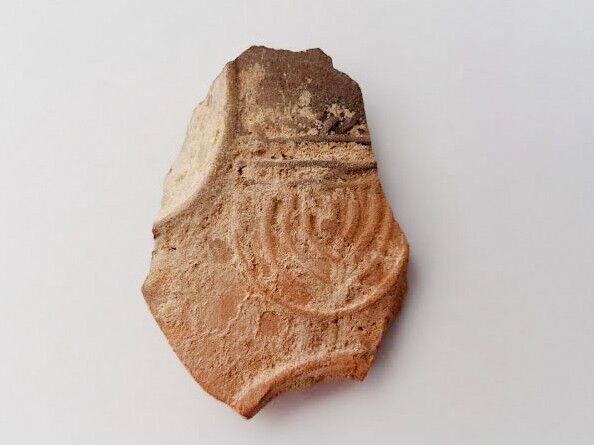By TPS • 4 April, 2019
The remains of a Jewish settlement from the Second Temple period have recently been discovered in Beersheba in southern Israel, the first time such findings have been unearthed.
As in multiple previous occurrences in Israel, the exciting discovery was chanced upon and the archaeological excavation was carried out after construction for a new neighborhood near the northern entrance to Beersheba revealed evidence of a 2,000-year-old Jewish community.
The findings revealed Jewish day-to-day life there, including part of an oil lamp decorated with a nine-branched menorah, one of the oldest such discovered by researchers. Limestone vessels used by Jews for reasons of ritual purity, a watchtower and more interesting findings were also found at the dig.
The site, dated to the first century CE and until the Bar-Kochba Revolt against the Roman Empire in 135 CE, also appears to contain underground hidden passageways used by the Jewish rebels.
Dr. Peter Fabian of the Ben-Gurion University in the Negev, and Dr. Daniel Varga of the Israel Antiquities Authority (IAA), stated that the “remains of the settlement cover an area of about two dunams and include several structures and installations, such as the foundations of a large watchtower, baking facilities, ancient trash pits and an underground system that was probably used as a Jewish ritual bath (mikveh).”
Signs of a blaze discovered in some of the structures show a crisis that the settlement experienced, probably during the First Jewish Revolt in 70 CE.
The site is located along the southern border of the ancient kingdom of Judah next to a road that led from Tel Beersheba to the southern coastal plain.
The site’s strategic value along the road was probably the reason for the construction of a 10 x 10 meter watchtower, the foundations of which were uncovered in the excavation. The remains of a staircase would have led upwards to the two upper levels that are no longer extant. During the Late Roman period, the stones of the tower were used to construct other nearby buildings.
The special finds uncovered in the excavation included a shard of an oil lamp of a type known as a Jewish “Southern lamp.” There was great excitement when the shard was cleaned and its decoration revealed: a nine-branched menorah.
Fabian and Varga explained that “this is probably one of the earliest artistic depictions of a nine-branched menorah yet discovered.”
It is interesting to note that of the few lamps found depicting a menorah, these are never seven-branched. This was in accordance with a ruling in the Babylonian Talmud stating that only the menorah in the Temple could have seven branches and thus lamps used in domestic contexts commonly had eight to eleven branches.
Dozens of bronze coins dating to the period of Roman provincial rule were found along the road. Some were minted in Ashkelon and others were minted in cities from throughout the Roman Empire.
